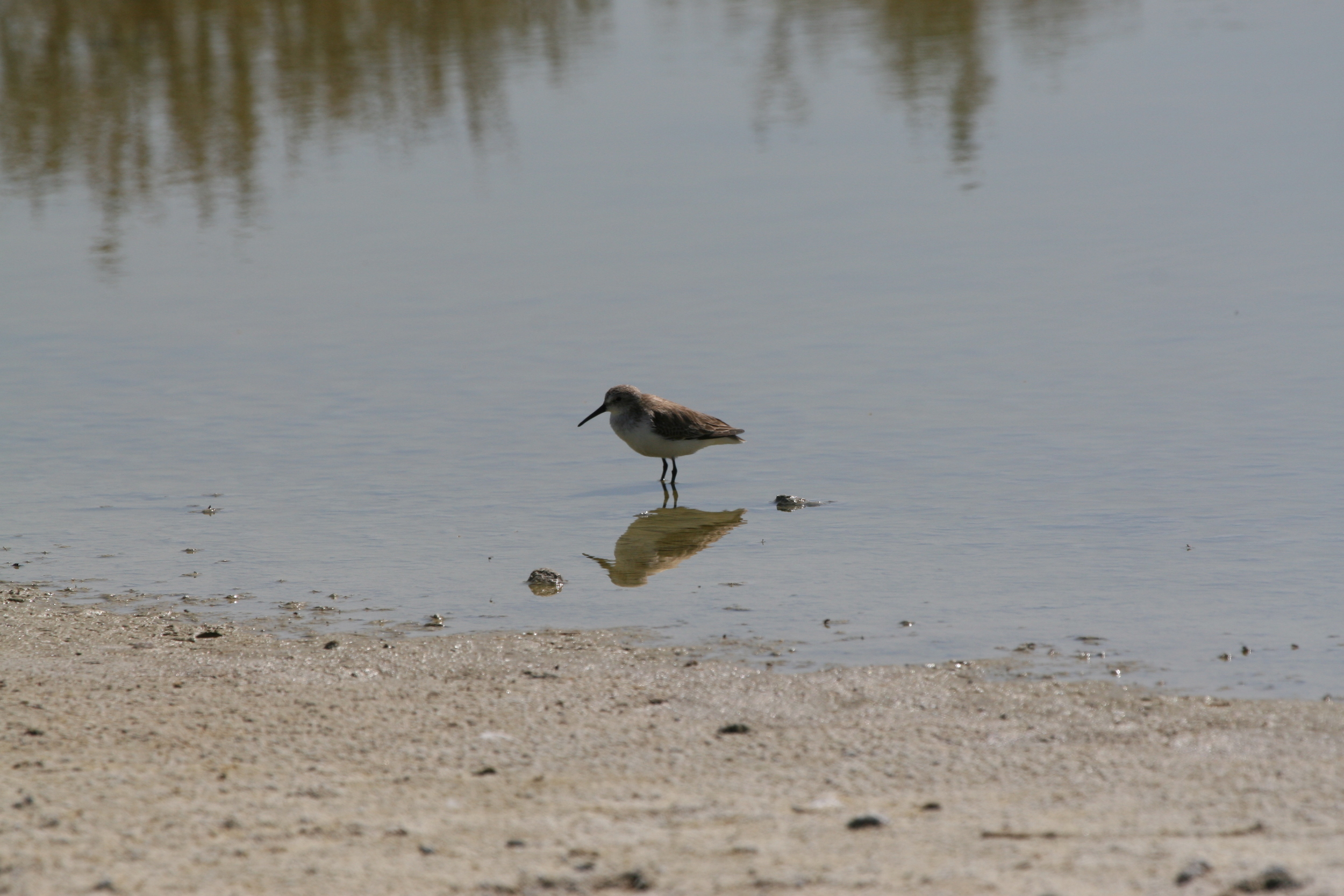Part 4 is dedicated to the largest wader family, calidris, all migratory birds of the coast. There’s an awful lot of small, unobtrusive waders in the genus, in the US called “peeps”, presumably for their high-pitched calls. They are cute and to be admired because they undertake some of the world’s most impressive and spectacular migrations. Some are crackers, rare or good looking or enigmatic, or all three, but there’s a bunch that don’t really do it for me, similar looking and hard to identify, and somewhat anonymous. I’ve had some great encounters and taken some nice photos, but equally you should also be prepared to witness some abominably poor record shots in amongst them 😉
077 Great Knot Calidris tenuirostris
Great Knot is a bit of a monster by Calidris standards. Like its slightly smaller close relative (Red Knot, see below) this is seen in decent numbers in various places around the coast of Australia. In Britain it is a major rarity and I did not see it there. If you scan the flocks of Red Knots that congregate on the St Vincent Gulf coastline in autumn, there are often a few Great scattered amongst the slightly smaller, slightly shorter-billed Reds. In autumn as the birds start to colour up they are much earlier to pick out. This bird was at Thompson Beach in March 2017. The light was poor, with the sun was going down on a cloudy day when I found this bird, so my post-processing was pretty aggressive. They are beautiful waders so I will need to try for better some day.
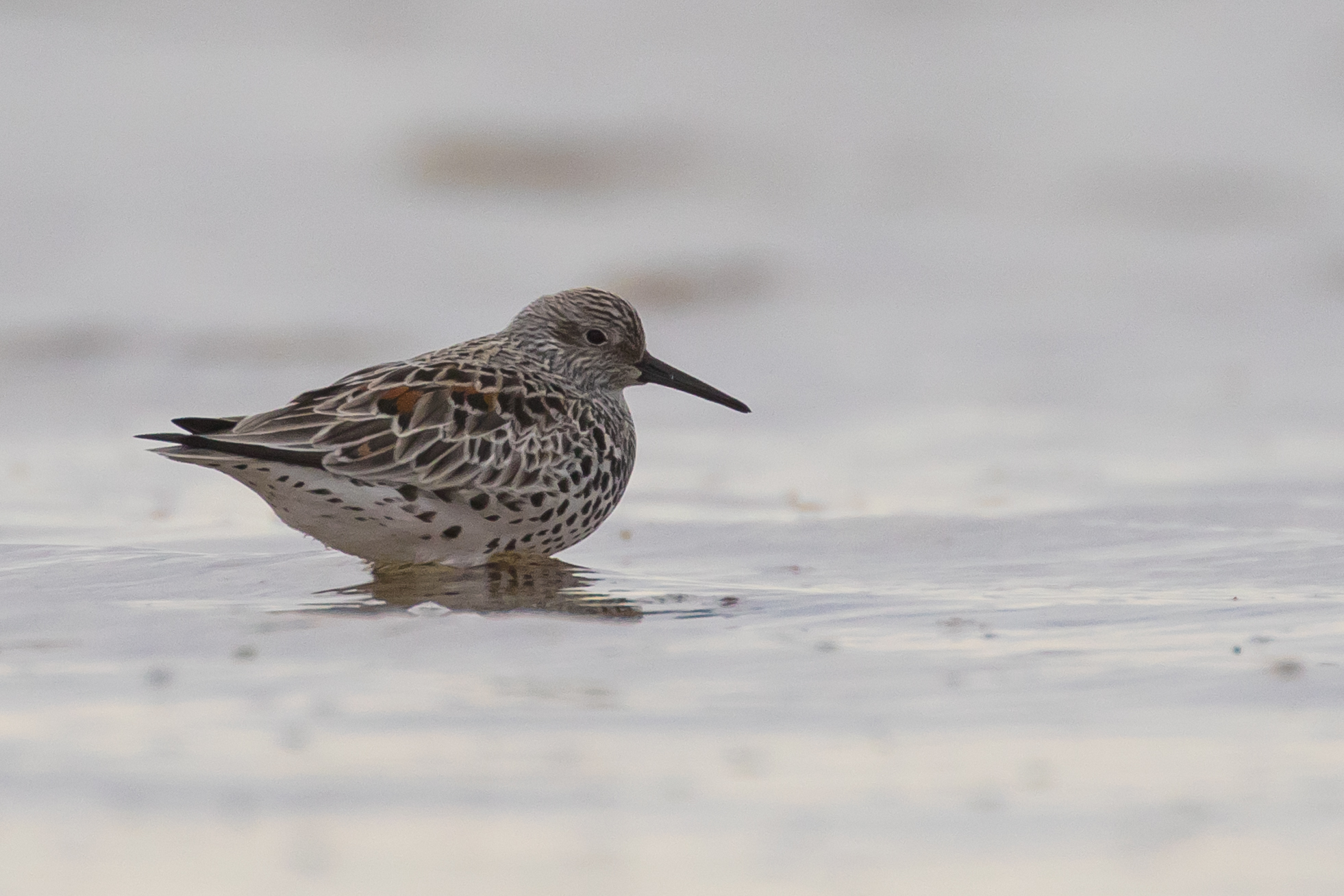
078 Red Knot Calidris canutus
Seen in various paces over the years, including a bird in winter plumage seen at Farmoor Reservoir. I probably ticked it off at the very lovely Alfred Cove on the Swan River, a small sheltered bay surrounded by affluent suburbia, and also recall seeing a small flock on Plum Island back in 2015. But I have seen it most memorably and spectacularly close to home. In autumn, flocks of up to a few thousand congregate at Thompson’s Beach, many coming into breeding plumage, ready for the journey north. I failed to get up there this year – prioritising other things like work and cycling over birding for the early part of 2020 – so this picture is from two years ago, early April 2018.
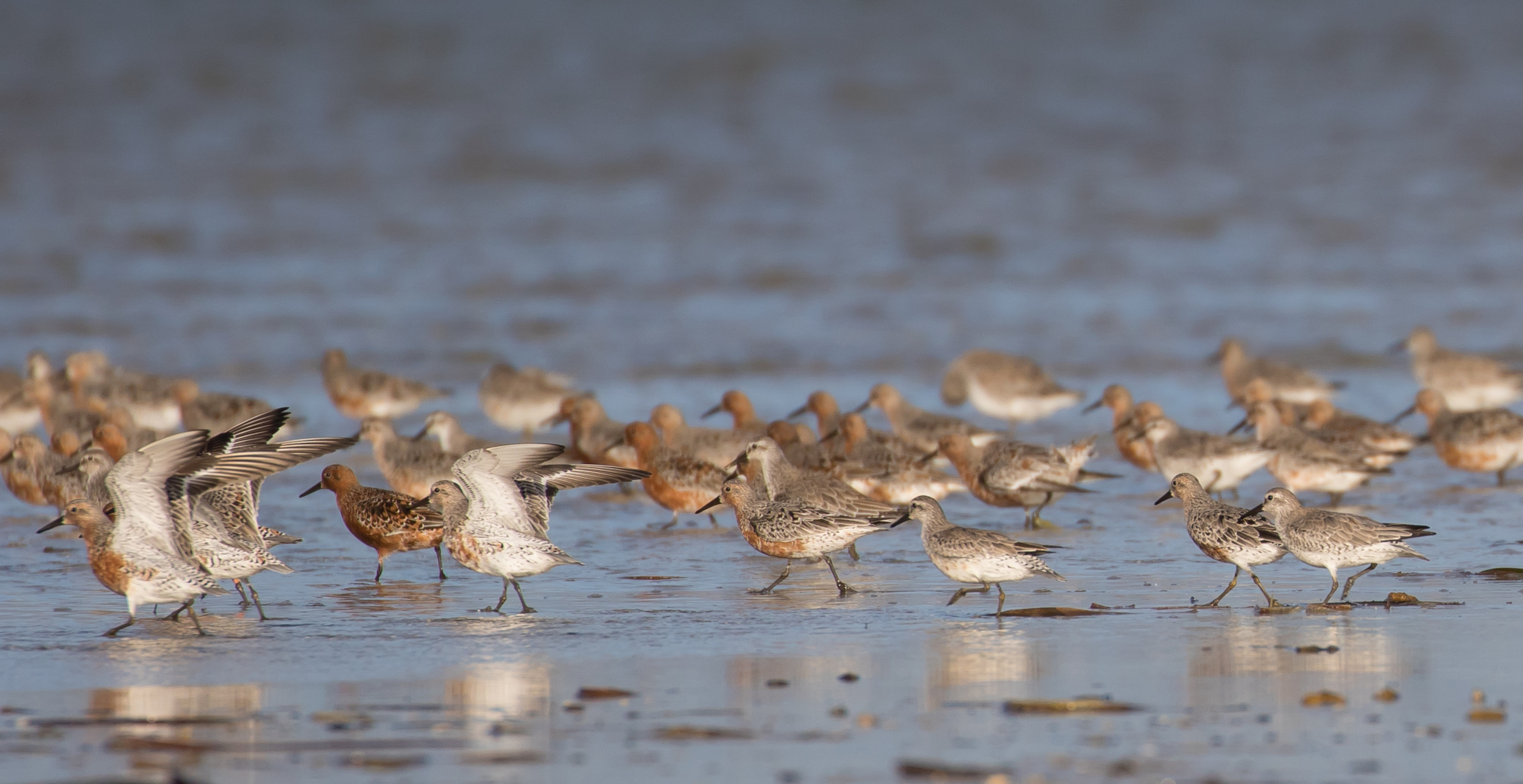
079 Surfbird Calidris virgata
A controversial inclusion. I had always been keen to see Surfbird. I had tried at Big Sur in 2010 and as noted above, had some apparently good gen for Santa Barbara Habour but dipped in 2011. The Oregon coast near Cannon Beach also seemed to be good habitat but I similarly came away empty handed. It’s not just the dips that got me keen on this particular species; Attenborough featured it in Life of Birds, with some astounding footage of a diminutive bird foraging on rocks while defying pounding surf, and – in a very nice pun – it lends its name to one of the top world-birding websites.
In Dec 2015 at ICCV I found myself birding the coast between Concon and Valparaiso. As well as seeing some fantastic species including Inca Tern and Humboldt Penguin, I spent a lot of time scanning rocks in the hope of finally connecting with a Surfbird. At one stop towards the end of my morning’s birding I noted several lifer Grey Gulls and fired off a few photos, but didn’t really give the birds a lot of attention; most gulls, even if they are lifers, don’t really get my pulse racing. Some time later I examined the photos and noticed some Turnstones in front of the gulls. I then did a double-take when I realised that slightly larger and slightly better camouflaged, there were also two Surfbirds mixed in with the Turnstones and Gulls. Technically I probably can’t count Surfbird on my list – and I will be doing my damnedest to see one and get good photos when I am next able to make it to the American coastline, but for now, this is my photo.
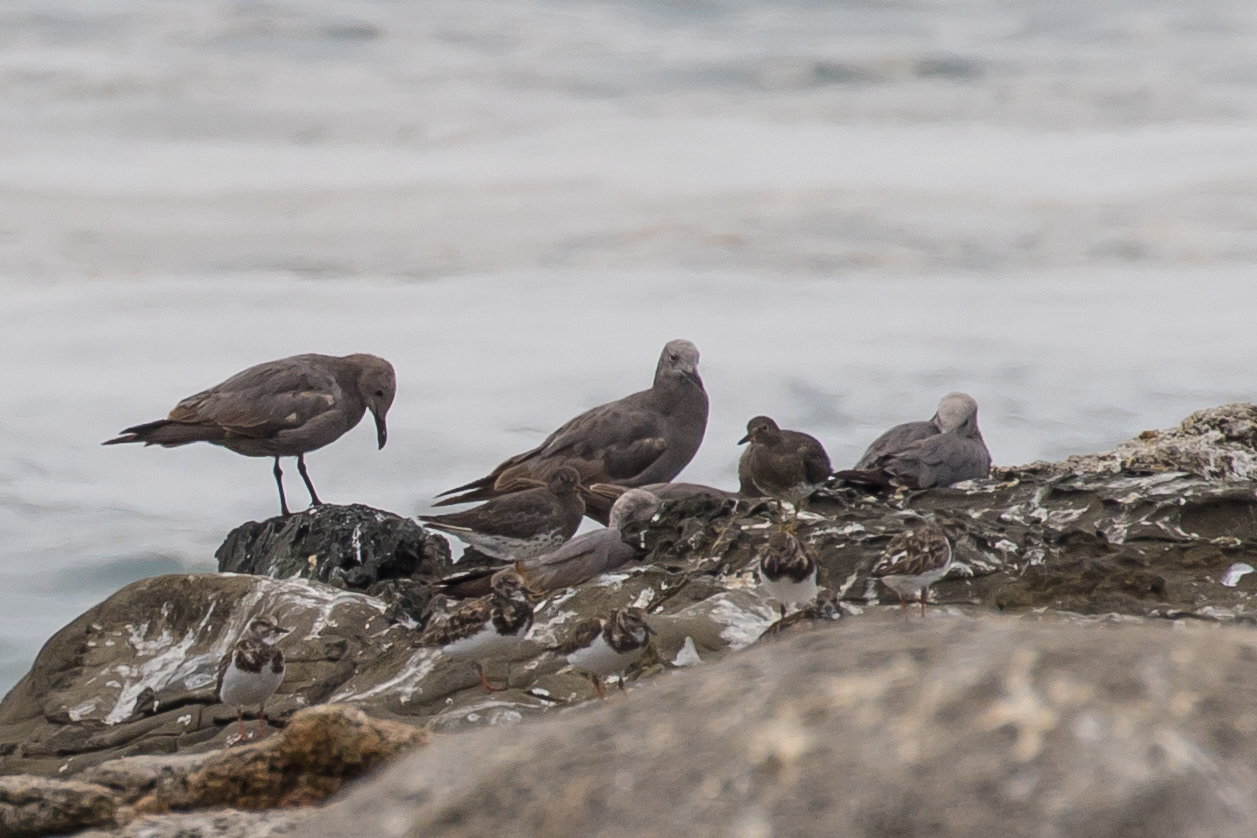
080 Ruff Calidris pugnax
One of the world’s most spectacular waders. I saw this in its less-than-spectacular winter garb in various places as a passage migrant or winter visitor – in Oxfordshire (where it is less than annual), in Spain (at the Llobregat Delta outside Barcelona), and one of my few self-finds, a bird at Magazine Rd Wetlands in Adelaide. Actually this self-find is a bit dodgy because I was not first to see it, I’m just counting it as a self-find because I didn’t know it was there when I went. But to see Ruff in its summer outfit is something extra-special. In 2011 I spent a long weekend in Poland with Tom Bedford (full report here). After 2 and half days in the wonderful Bialoweiza Forest looking for woodpeckers, owls and flycatchers, we headed two hours north west to the Biebrza Marsh. We thought we might be bit late for lekking Ruff in May, but took a punt to catch the tail end and were very glad we did. Two mornings in a row we drove our 2wd precariously along damp grass and mud tracks as far as we dared to a spot just south of Grady Woniecki. At times we felt our way on foot, leading the way for the car, to ensure we could get as close as possible with the car to use as a hide.
This was a simply wonderful birding experience: White-winged Black Terns fluttered about like butterflies, Garganey dabbled in the shallow flood, Whooper Swans, both White and Black Storks as well as Lesser Spotted Eagles cruised overhead, and numerous waders bustled about: Dunlin, Grey Plover, Spotted Redshank (all in smart summer plumage), Wood Sandpiper, Ringed Plover and of course Ruff. More than a dozen birds were present including several males. Mostly they were preening or feeding but occasionally one or two would face off with each other or a female. I saw 13 lifers on that trip including some of Europe’s best birds (e.g. Hazel Grouse) yet this encounter stood out as a highlight. Sadly my pictures are not great because we were fairly distant, making sure we did not disturb the lek by getting too close, but I took a fair amount of digiscoped video. It’s a shame this was all in SD; Poland was my last trip before upgrading my digiscoping camera from Fuji F31fd to a Nikon Coolpix 300 that could take HD video. Even so, it sufficiently atmospheric, and capture the moment so much better than a still that I am breaking with convention here and including a video instead of a single image.
081 Broad-billed Sandpiper Calidris falcinellus
I’ve yet to see this is SA. It’s a rarity that shows up once every few years. Most recently that I am aware of, one was seen in the winter of 2017 (see blog post, in which I sort-of dipped though didn’t properly try). In fact my only Broad-billed Sandpipers came towards the end of a stellar wader day in the Gulf of Thailand in 2010.
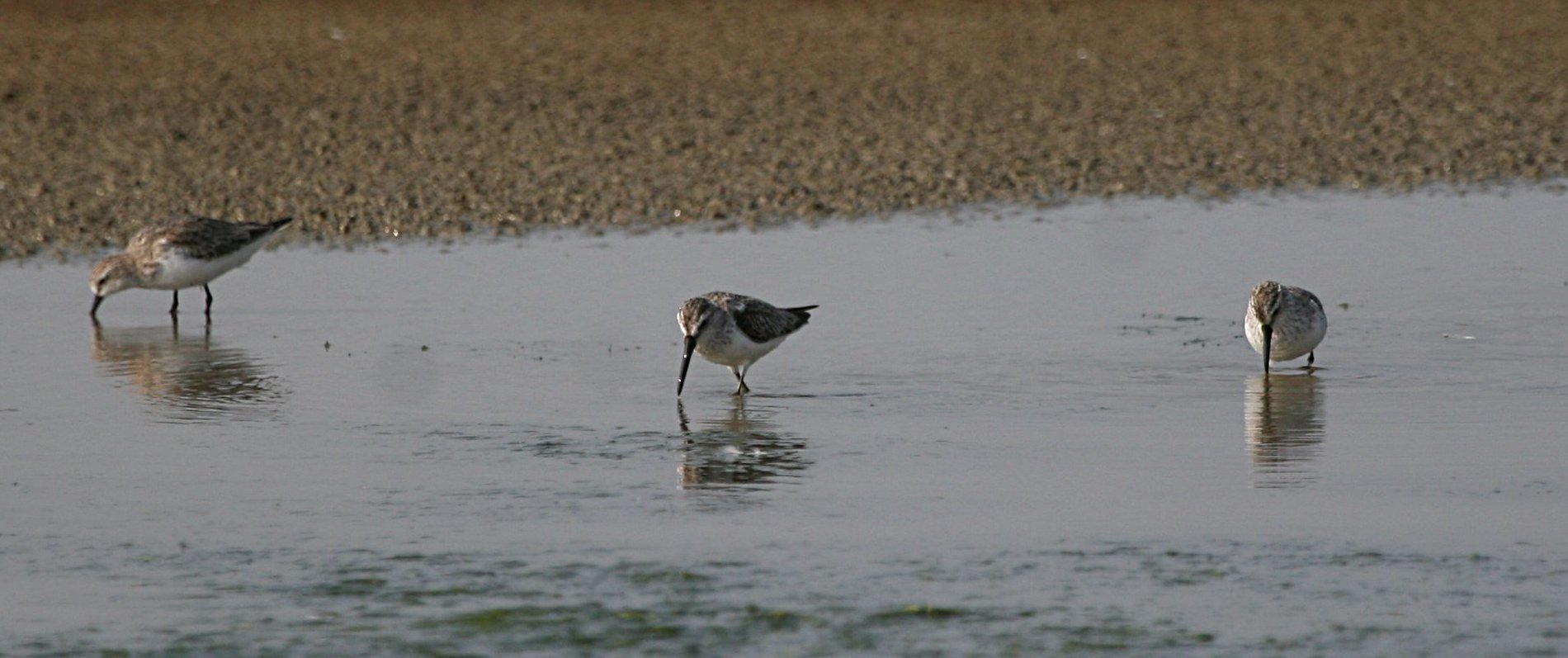
082 Sharp-tailed Sandpiper Calidris acuminata
One of the two commonest migratory waders in SA (the other is Red-necked Stint). If all else fails at places like Tolderol, Magazine Rd or Goolwa Barrage, there’s usually a few of these scuttling about that are worth trying to photograph.
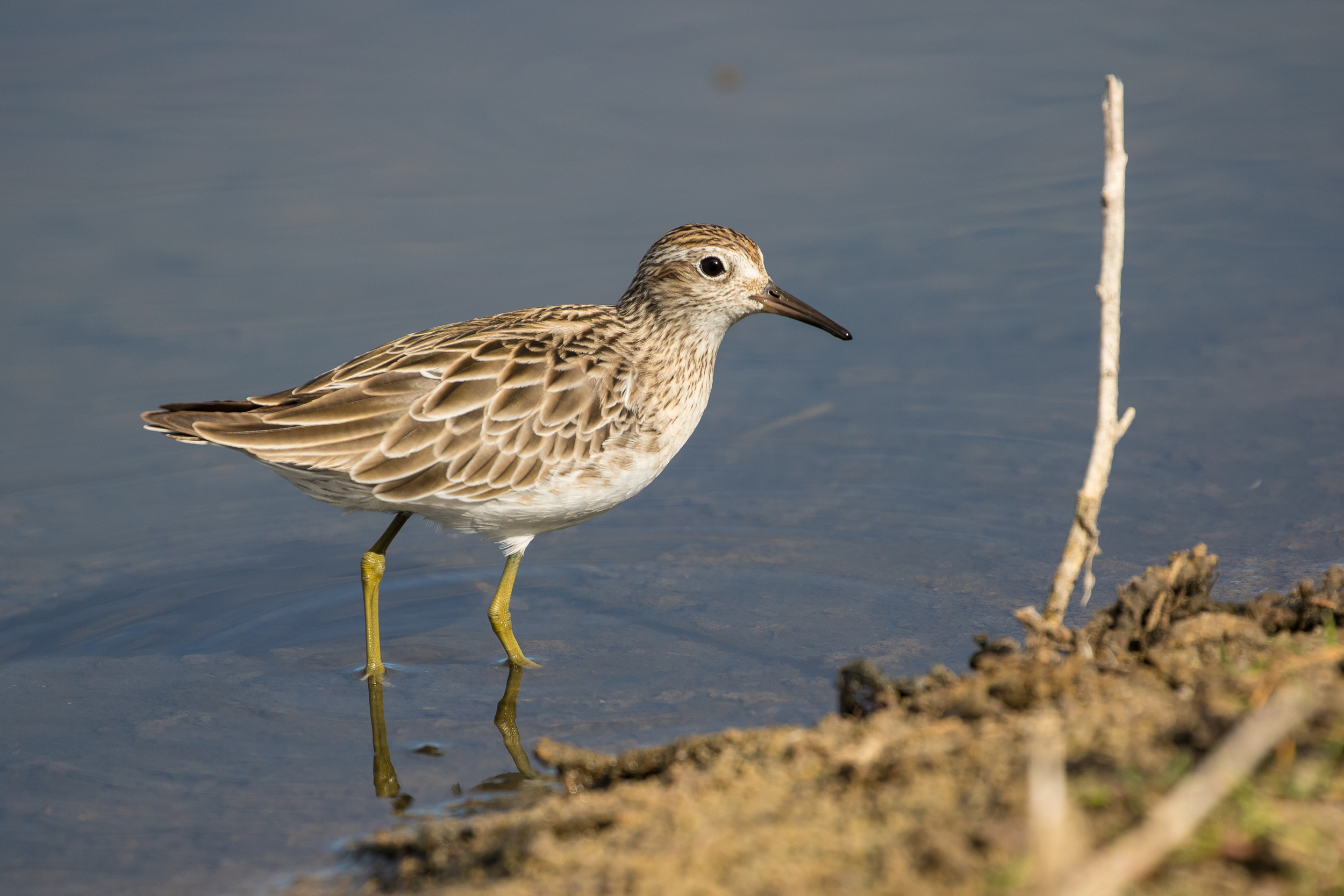
083 Stilt Sandpiper Calidris himantopus
Sadly no photo of Stilt Sandpiper. I have only ever seen one, twitched at Brownsea Island in August 2006. Like my Upland Sandpiper twitch I remember this as being very rushed. Though the details are hazy, I must’ve taken the afternoon off work and driven down to Sandbanks (almost exactly 100 miles from home) to catch the ferry over to the island. I probably hired a car to do the trip; this was in the days when we had only one car in the family because it was cheaper for me to rent occasionally when I needed to twitch, than it would’ve been to register, insure and run a second car just so I could go birding. I must’ve bombed down, spent no more than an hour on the island (fortunately the bird was at the eastern end of the island not too far from where the ferry docks) then made it back on the last ferry at 17.15. For some reason I have no images – it’s inconceivable that I travelled without scope, so I must’ve decided that lugging digiscoping kit around was just a bit too much hassle. This is rather sad because Stilt Sandpiper is a smart and elegant Nearctic wader, and I am rather unlikely ever to find myself in its breeding range, which is the far-north arctic wilderness of Canada!
084 Curlew Sandpiper Calidris ferruginea
A small and very elegant wader, so named because of its slender down-curved bill, they are seen in reasonable numbers on the coast north of Adelaide and south at places like Tolderol. Sadly the used to be much more numerous, and are now critically endangered in Australia having declined more than 40% since 1975, migratory victims of human encroachment on the eastern flyway. It’s great to see them in late autumn because there are usually one or two that have coloured up into a striking brick-red breeding plumage (latin name “ferruginea“) before heading north. Depending on when you read this, my site banner features a couple.
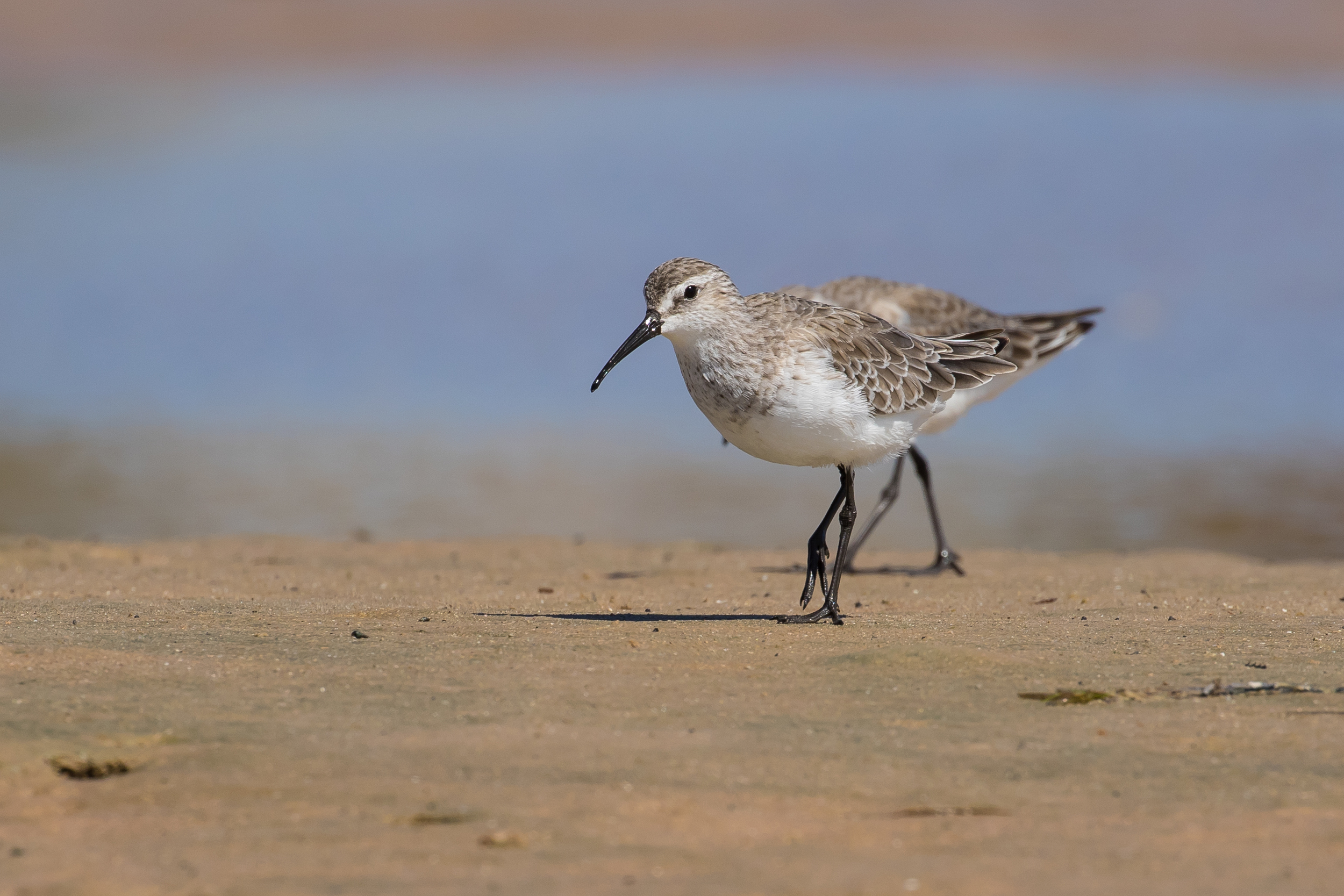
085 Temminck’s Stint Calidris temminckii
One of the two smaller waders that are regular passage migrants in Britain. Generally plainer than Little and with green legs, not black, but with nice distinctive scalloping on the back (indistinct but visible in the pic below). I have seen Temminck’s Stint at Farmoor Reservoir, but saw my first over the border in Berkshire. Also seen in Thailand, and the bird pictured was at the Dubai Pivots, one of the first birds on my 2013 stopover.
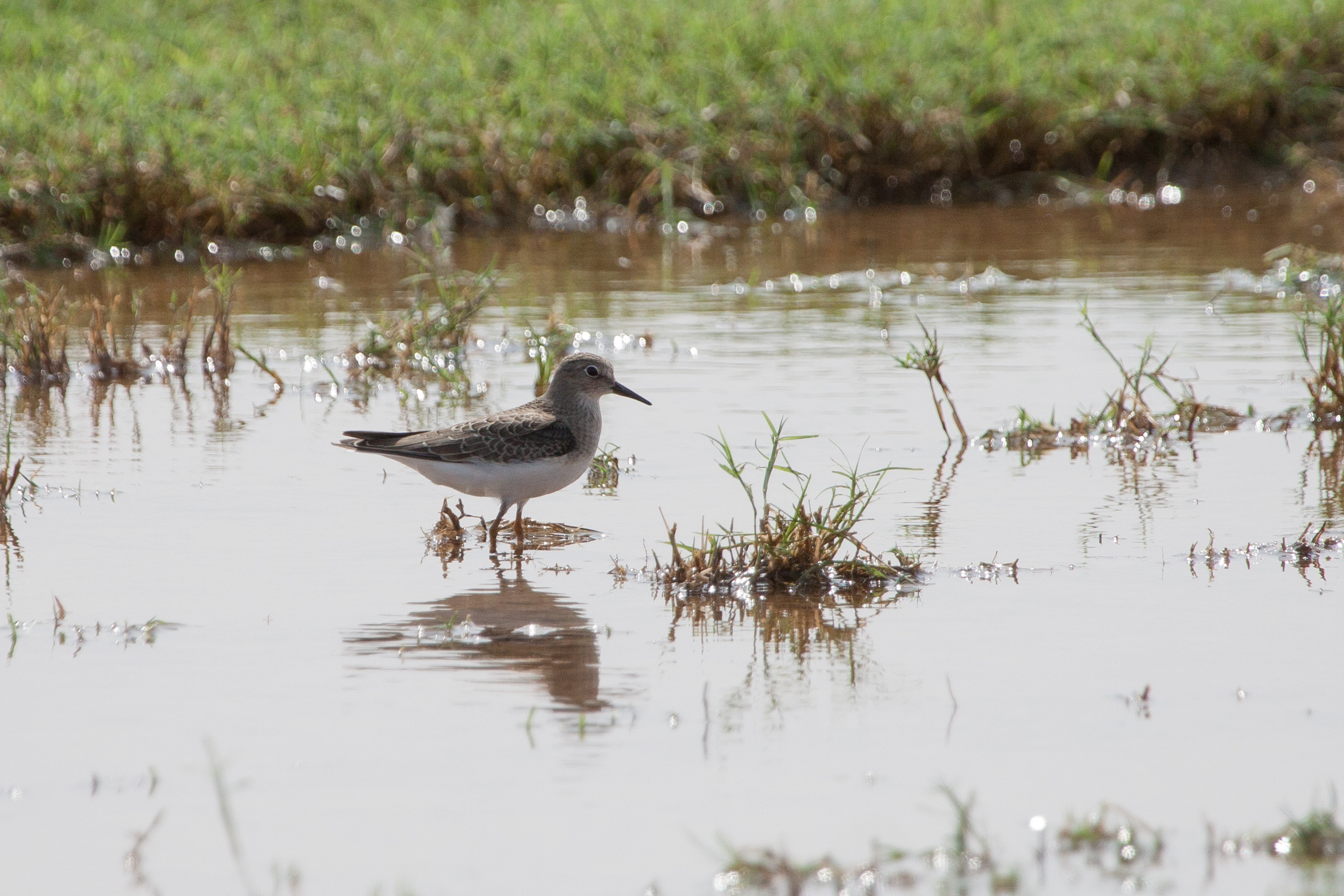
086 Long-Toed Stint Calidris subminuta
I saw my first Long-toed Stint in the Philippines in 2010 at the excellent Iwahig Penal Colony. After some discussion with the guards we’d been allowed to drive in pre-dawn and flushed several nightjars from the track, collected Palawan Frogmouth and some lovely locals such as Hooded Pitta, Palawan Blue Flycatcher and the very cute Palawan Flycatcher. After a few hours birding along the river we drove out again, this time in the light. We realised that the track is lined with rice paddies, tended by the prisoners in this low security penal colony. Among other waders and bitterns we found several lovely Long-toed Stints. These had not really been on my radar, but were on Steve’s target list on account of a sore dip several years earlier in Britain. Although usually annual in SA, it took until last year (2019) for me to add LTS to my Australian list when I finally connected with one at Tolderol (blog post). I must’ve inspected every Sharp-tailed Sandpiper, searching for a Red-necked Stint-sized bird that looks like a Sharpie. Each bird I would question myself, but when I finally did find the bird it was unequivocally obvious. The pic, BTW, is from Thailand in 2010.
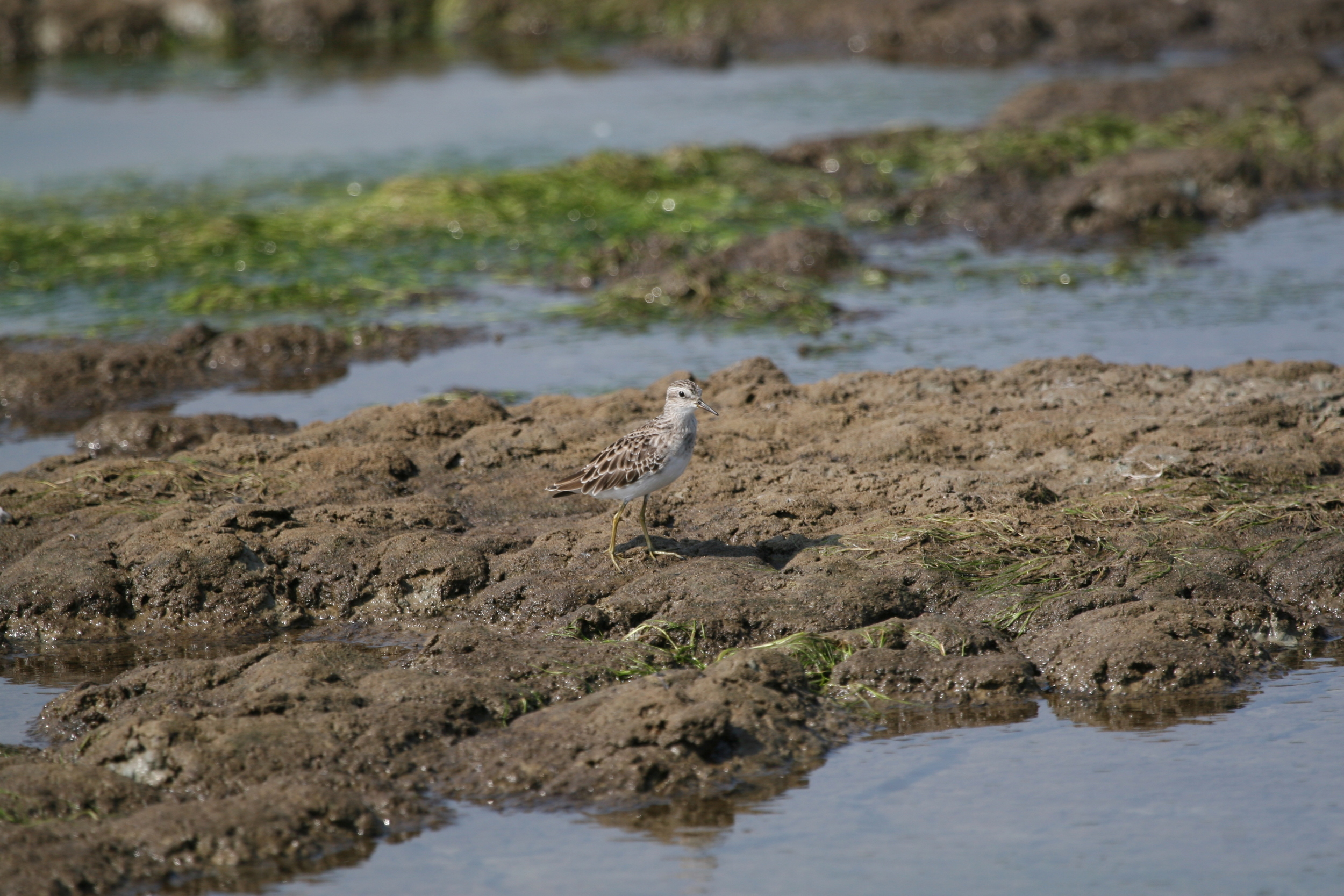
087 Spoon-billed Sandpiper Calidris pygmaea
It’s hard to write new stuff about one of the worst’s most unusual, endangered and desirable waders. After my short but stellar few days birding in NZ I was heading back to Oxford in time for the annual admissions interviews. But a timely conversation at Birdfair earlier in the year had crystalised a strategic booking of my return on Qantas via its BKK-LHR leg for one more bit of birding before getting back to work normality. (note: when relating the tale of my one night in Bangkok, I usually need to make sure I clarify the purpose of my trip lest I be lumped with other middle-aged single male travellers to that part of the world! Hopefully not necessary for the readership of this blog, but you never know.)
I’ll take up the story from my trip report:
I first saw a pic of SBSP in my ancient Nat Geographic North American field guide. I bought this classic guide before I was a birder, in the days when I went around exotic places pointing a pair of inadequate compact Olympus porro-prisms at anything that moved, hoping that if I did manage an ID it would grip off SMR Young, even though I had no desire to enjoy the bird myself. Even back then my reaction to the plate was “what a funky looking bird”, but I completely failed to realise that it was just a vagrant to North America (last seen in the 1970s) and rapidly approaching critically endangered status.
By the mid-late 2000s I had long since graduated from the juvenile pursuit of birding just to grip off Dr Young. I had been bitten by the bug myself and it was now primarily for me, with the occasional grip-off of Steve just a happy by-product. I was also of course also now much better informed about world birding, and I began to wonder whether a work trip to or via Hong Kong might yield a twitching opportunity for SBSP, but the work opportunities didn’t arise and in any case I came to realise that Hong Kong was (increasingly so with the passage of time) very much an outside bet even at the optimal time of year. I was galvanised again by visiting Birdfair in August 2010 where a chat with James Eaton’s father at the Oriental Bird Club stand made me realise Thailand in winter was my best bet. Thus, with a flight from Sydney to London stopping in Bangkok, I now had an ideal chance to see this near mythical creature, and one that had to be grasped with both hands before it became too late.
The flight from Auckland via Sydney was long and tiring and it was midnight by the time I arrived at my cheap but very upmarket hotel off the Sukhumvit Rd near downtown Bangkok. I grabbed as much sleep as I could, but at 4.30 my alarm woke me in time to be picked up by my guide.
…
We dipped early on at Pak Thale, so headed for another site of salt pans a bit further south, Laem Pak Bia.
…
We drove a track between pans and noted various species on the water or up on the banks, including Wood Sandpiper, Ruff, a lovely Long-toed Stint, Temminck’s Stint, increasing numbers of Red-necked Stints, a Common Greenshank, Lesser Sand-plover, as well as a Paddyfield Pipit on the track. We came to a pan where there appeared to be a group of 20 or so Red-necked Stints, scuttling about, feeding like little clockwork toys. I scanned quickly through the group thinking I just needed to eliminate this bunch from our enquiries and move on. Suddenly one that had had its back to me turned, stood up and displayed a marvellous spatulate bill for me. Was it just mud stuck to the end? Nope, this was the real deal. I had found one! You bloody beauty, Spoon-billed Sandpiper!
After a trip out to the famous sandspit with Mr Deng and a cracking meal of spicy fish and vegetables prepared by Mr Deng’s wife (such a privilege to experience this home Thai cooking and hospitality) we drove back to Lame Pak Bia. I managed to relocate two different Spoon-billed Sandpipers and spent more than an hour observing and photographing these special birds.
A few days after my return to Oxford I processed one of the better SBSP pics and sent it to SMR Young with the tantalising subject “cheeky bonus bird” and advice to “Turn down the volume on the expletives before opening the attachment”. His response: “—-ing —-! My first words – spoken quietly in shock as well as on your advice. You —-ing —-! You’ve really done it now. Oh you absolute —-ing —-! —-!!”. I could hear his voice as I read it and smiled: grip mission accomplished.
Of course what this grip did was ensure that I was forced to modify our Philippine itinerary in 2014 to accommodate a two day stopover in Bangkok on the way. Steve duly clawed SBSP back during an excellent and great fun couple of days of birding and generally excellent craic.
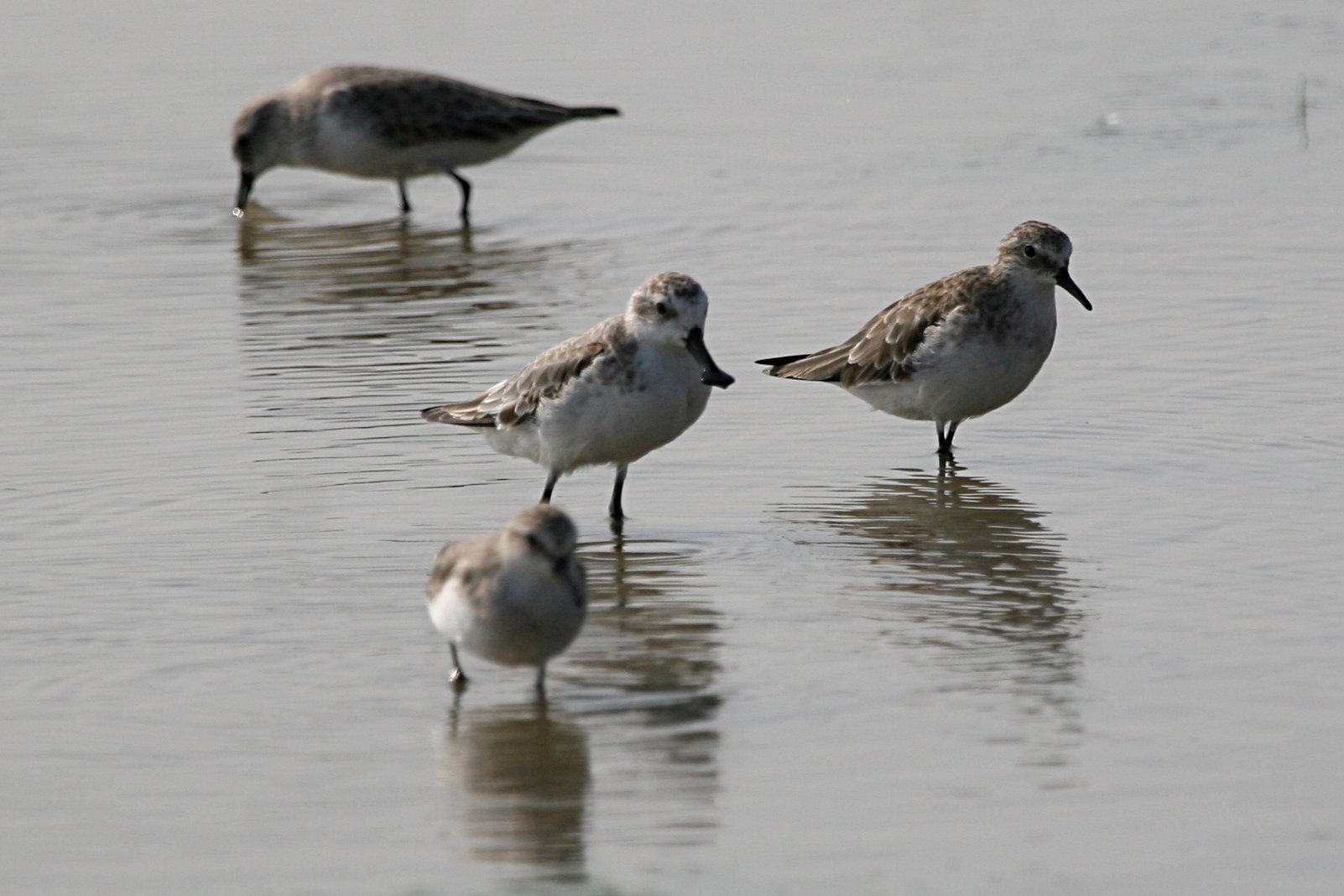
088 Red-necked Stint Calidris ruficollis
From one of the rarest to one of the most numerous – at least most numerous in places that I go birding. RNS usually outnumber all other waders at the coastal sites I frequent, as well as at Tolderol. That is, apart from one time when we need just a single for our twitchathon list and they were nowhere to be found!
Red-necked Stints are simply incredible creatures. Each year our South Australian stints make a 25,000km round trip flight to Siberia or Alaska and back, yet one would fit on the palm of your hand and weighs only about 20 grams — about the weight of a Tim-Tam! This photo of a RNS coming into breeding plumage was taken on Hindmarsh Island one autumn evening before they headed north.
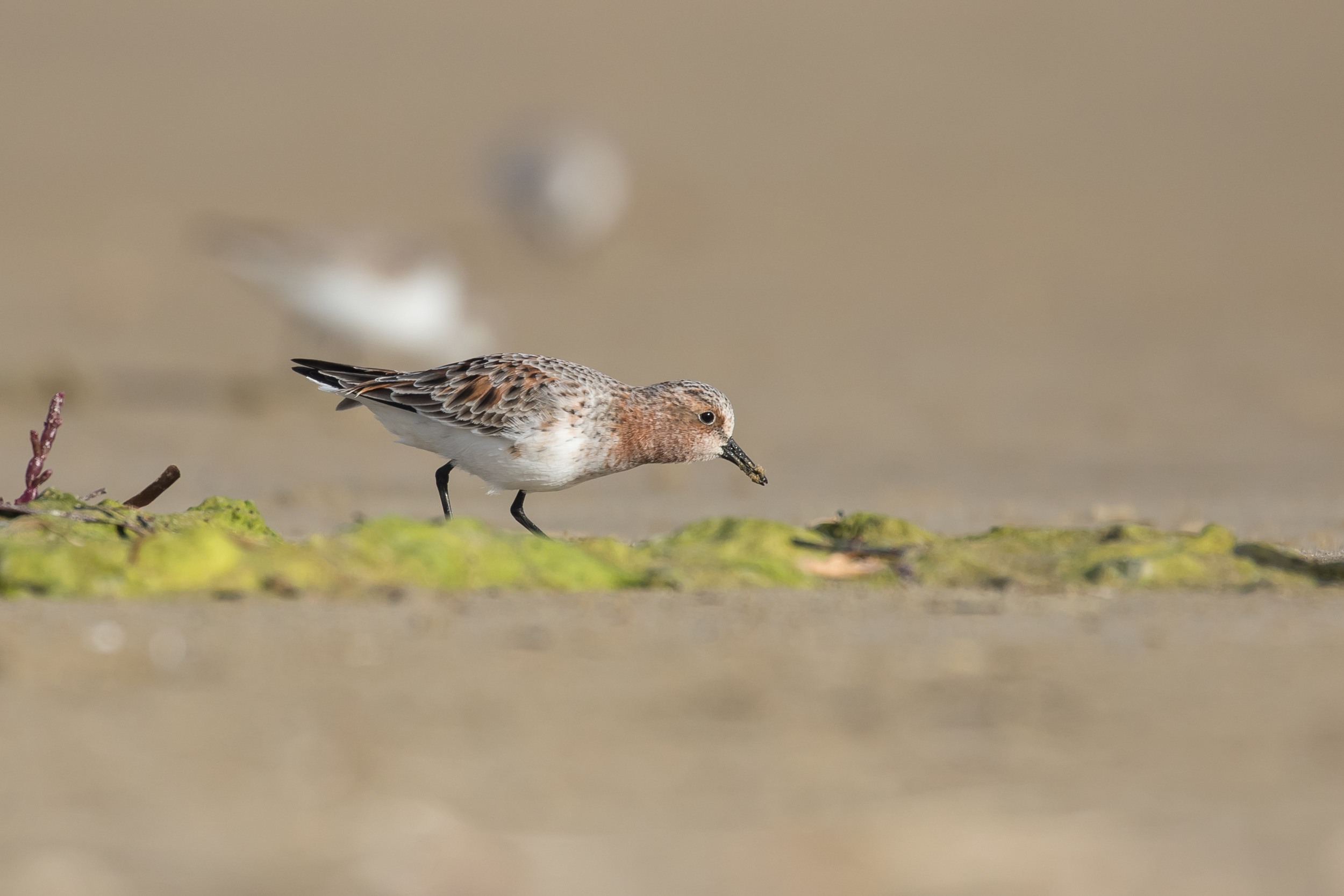
089 Sanderling Calidris alba
In my inaugural birding in Perth in January 1994 I travelled around the metro area and hills following the excellent “Birding Sites Around Perth” (Ron Van Delft) book that had been compiled from local RAOU birders’ surveys of numerous suburban sites. Each site was accompanied by an annotated aerial photograph showing trails and access, a list of birds regularly seen, some descriptive text, and some featured species. I followed it, often with Dad for company, to Forrestdale Lake for Splendid Fairywrens; to Thompson’s Lake for Rainbow Bee-eaters (though later discovered that they breed on Bull Creek within metres of where I walked to school every day for 5 years); to Floreat Beach for White-winged Fairywren; Booragoon Lake for Nankeen Night-heron; Bibra Lake for Musk Duck and Buff-banded Rail; and to several other sites. Towards the end of my 3 week stay I realised with a few new species I could reach 100, a number that seemed impressive to my novice birding brain. One of the “regulars” that looked gettable at an interesting site I’d not yet visited was Sanderling at Woodman Point. It was the only strictly coastal site I visited on that trip, and, with Sanderling being strictly coastal, it duly delivered. It would be another 5 years before any kind of photography entered the equation (Canon A1 and a cheap 500mm mirror lens), and another 24 – until two months ago – that I would finally get a photo. In this case it was at Danger Point near Port MacDonnell where Mike Potter and I arrived late afternoon for a quick spot of birding before a Sunday pelagic.
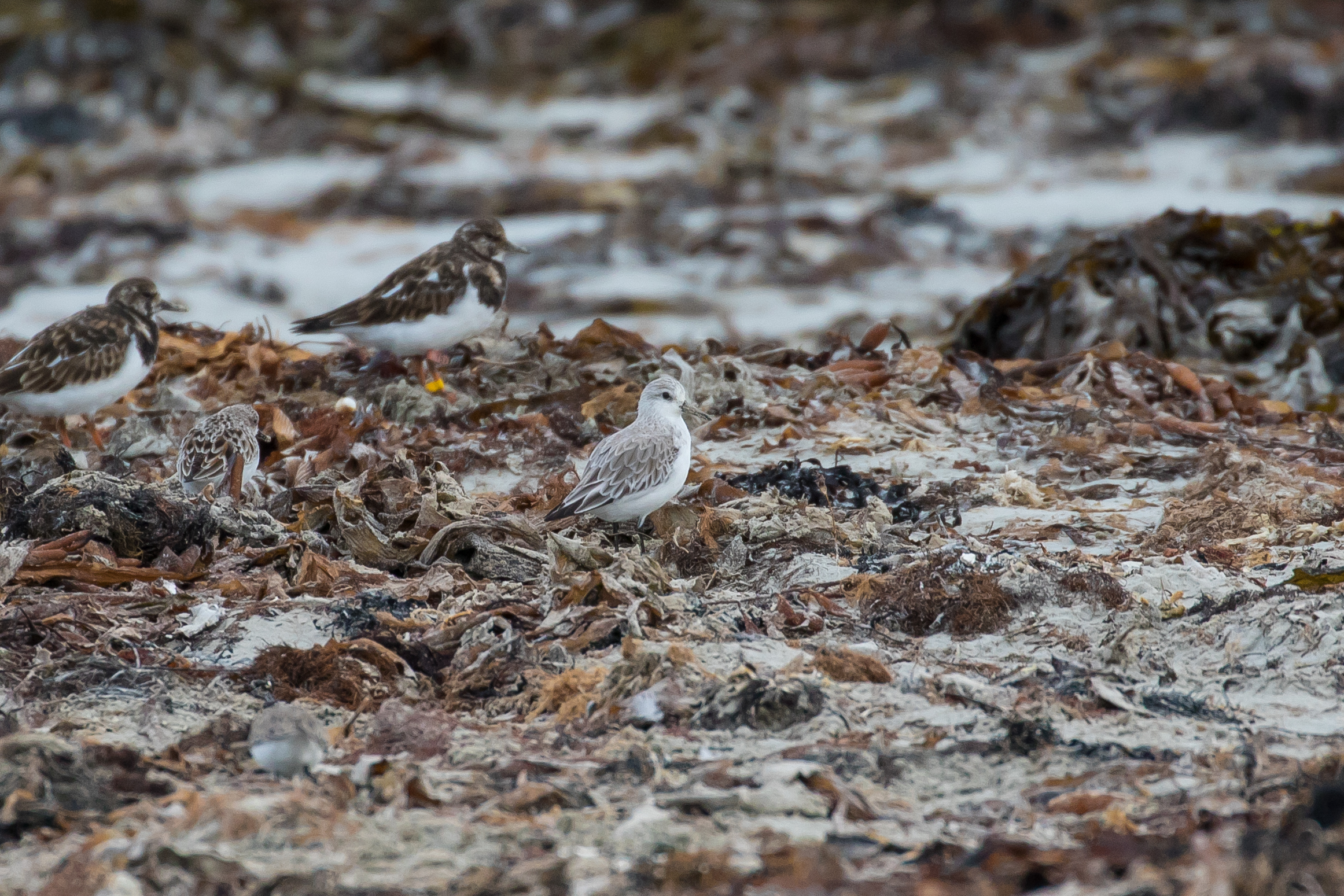
090 Dunlin Calidris alpine
Dunlin would be a mega-rarity in Australia but it was the commonest migratory wader I encountered on the causeway at Farmoor and on the flood of Port Meadow. Because it is common, and because I had seen loads by the time I got serious about taking pics, I have almost no photographs. The ones that I do have were afterthoughts when I was chasing a different rarity at the ressie. So this digiscoped arse-end of a Dunlin is the best I have!
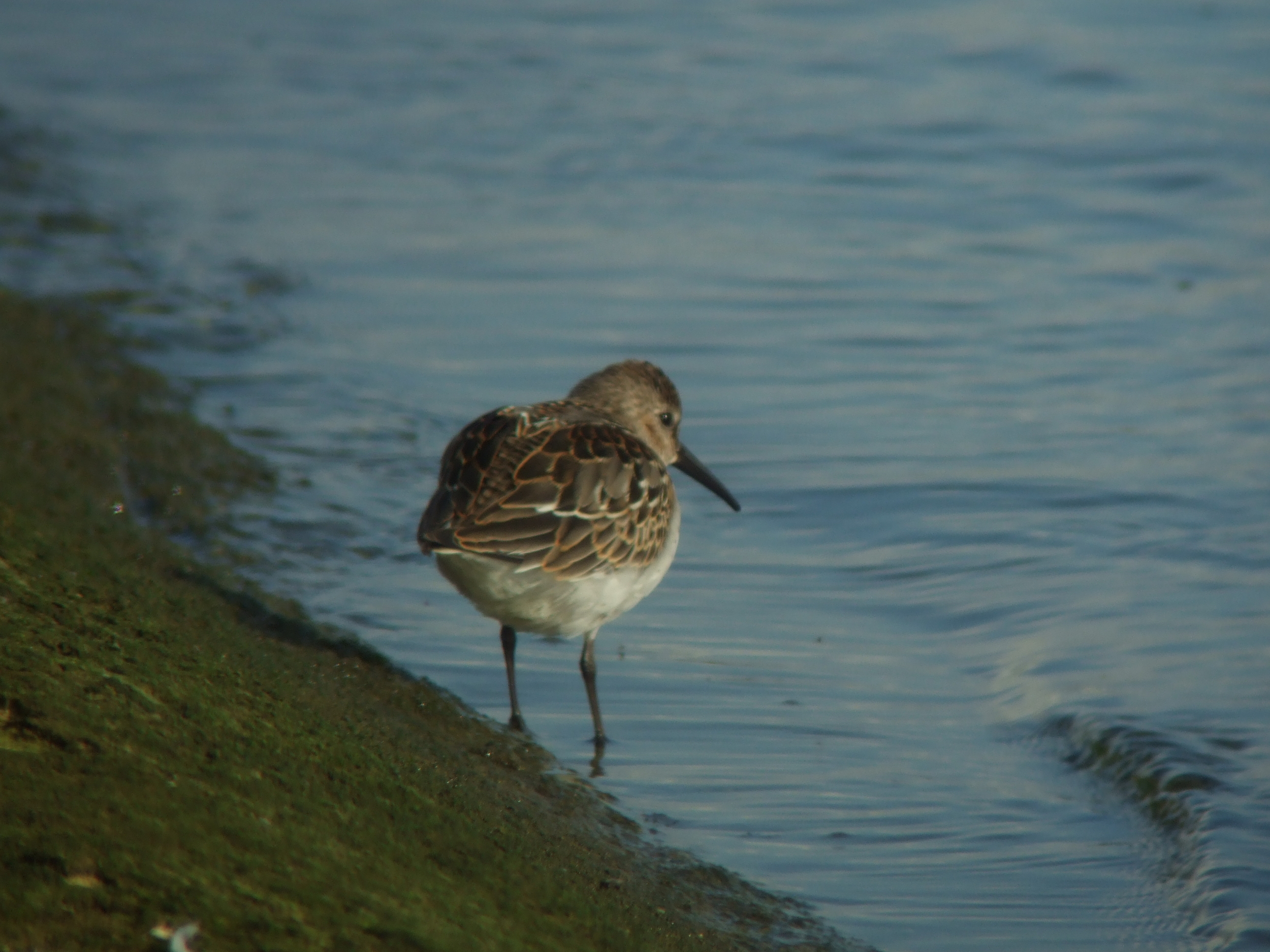
091 Purple Sandpiper Calidris maritima
This smart wader was a relatively early tick for me, soon after we moved to Cumnor. Purple Sand’ is more-or-less strictly coastal — it would be with a latin name like maritima — and The Birds of Oxfordshire annual report records them as “rare passage migrant”. A quick check of back-copies shows that my bird was most likely ‘99 because there were two birds seen that August at Farmoor Reservoir, with both recorded as “m.o.” (many observers). At the time, as is often the way with new birders, I did not appreciate its rarity in Oxfordshire, or that subsequent opportunities to see another would be very limited.
092 Baird’s Sandpiper Calidris bairdii
My first Baird’s was at Minsmere in 2004, seen with lots of other birders, all of us eager to justify our lengthy trips to the coast for what turned out to be a mere Eurasian Curlew, with at least a rarity for our efforts. In 2015 I then found a few at a wetland outside Santiago, but they were distant and I was looking for (and dipping on) another specialty wader, South American Painted Snipe. I have no pictures of Baird’s.
093 Little Stint Calidris minuta
Little Stint is one of the commoner autumnal waders at Farmoor with a few turning up each year – though one year before I started birding there regularly, more than a hundred showed up. Farmoor is just about the most watched site in the county, with Dai John up and down the causeway most days, Nick Hallam grilling the gull roost almost every evening come rain or shine, and numerous other birders like me semi-regular visitors. This meant that finding something rare, or even scarce, like Little Stint almost never happened for me. I found a few Black Terns, a Little Gull and Little Stint was just about the only other slightly-less-than-expected non-regular that I could claim. Sometimes I would deliberately avoid looking at the log so as not to ruin the thrill of the unexpected.
Most Little Stints seen at Farmoor are juveniles, so nicely marked with clear white rails down their back. Here’s a digiscoped shot from Farmoor, obviously taken in typically poor, fading autumn light; sadly the best I have.

094 Least Sandpiper Calidris minutilla
Very similar to Little, but the North American counterpart. Most serious briders in UK have it on their British lists because it’s a fairly regular (once every few years) vagrant. Steve even had a hand in finding one a few years back. He didn’t find the actual bird, but it was him that pointed out the Little Stint people were watching looked more like Least. I haven’t seen one in Britain. My life bird was from near Galveston in 1994 (see also Semi-palmated Plover), and subsequently I‘ve seen a few in various places on US conference trips. The birds pictured were at Salton Sea, which as I’ve intimated elsewhere in this blog is fantastic for birds and birders but not the most ts picturesque part if the US.
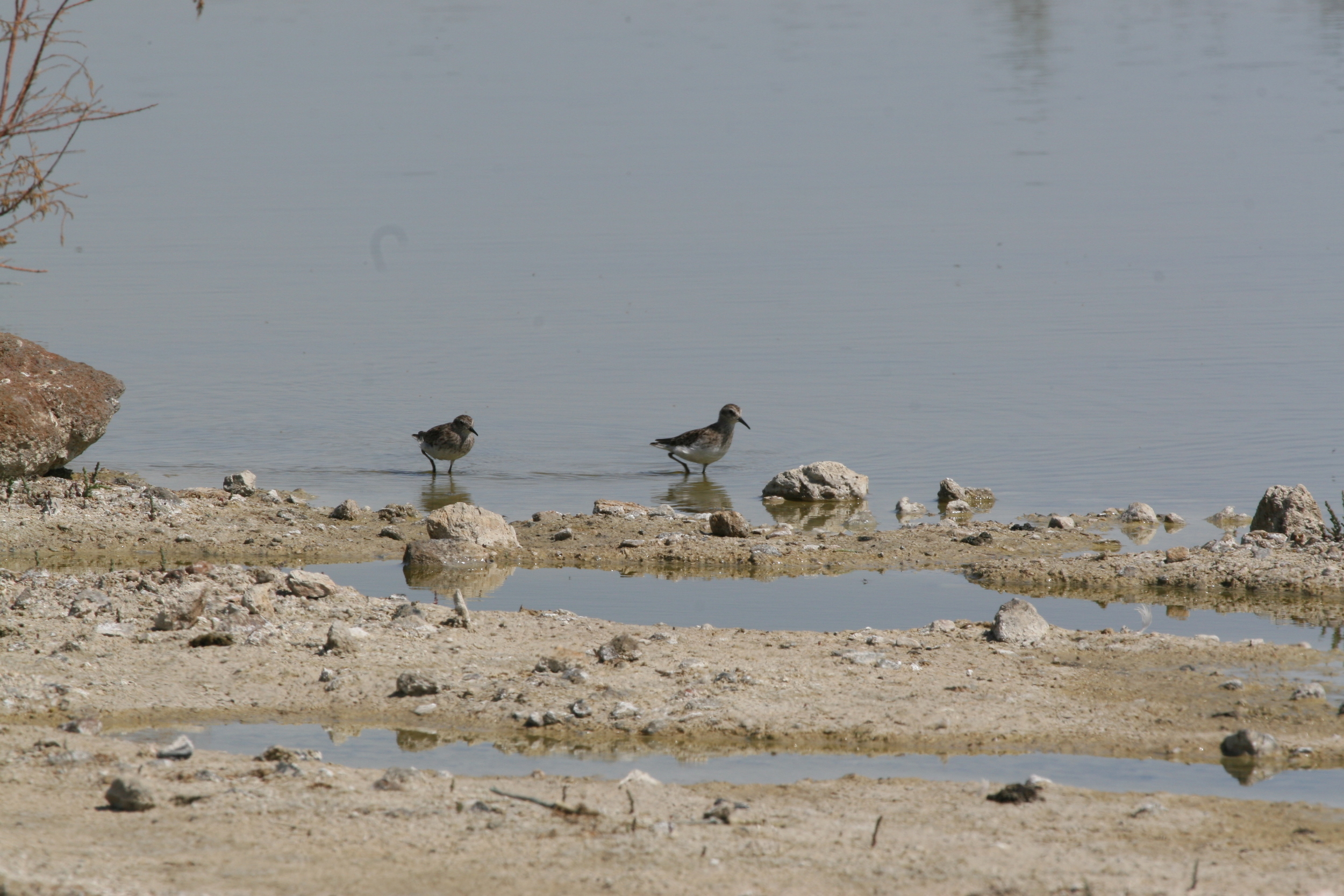
095 White-rumped Sandiper Calidris minutilla
You’ll have to take my word for it that the bird pictured is a White-rumped Sandpiper. The photo was taken using one of our very first digital cameras, a Canon Ixus fixed focus job, that I hand-held to the scope to get an image. It shows. But the pic is really quite similar to – if blurrier than – the lovely pencil drawing by Ian Lewington that graces the cover of the OOS’s Birds of Oxfordshire 2005. The bird was at Radley Gravel pits, in a pond near the railway line in late October and stayed a few days into early November. Goodness knows how Paul Cropper found it, because to get there involved walking down some underused paths and climbing up a bank to scan from behind a fence across a mostly birdless expanse. Maybe he spied it from a train window, but if he did it was a remarkable piece of birding (even if he didn’t he was sharp enough to pick it is different from the 3 winter-plumaged Dunlin it was hanging around with).
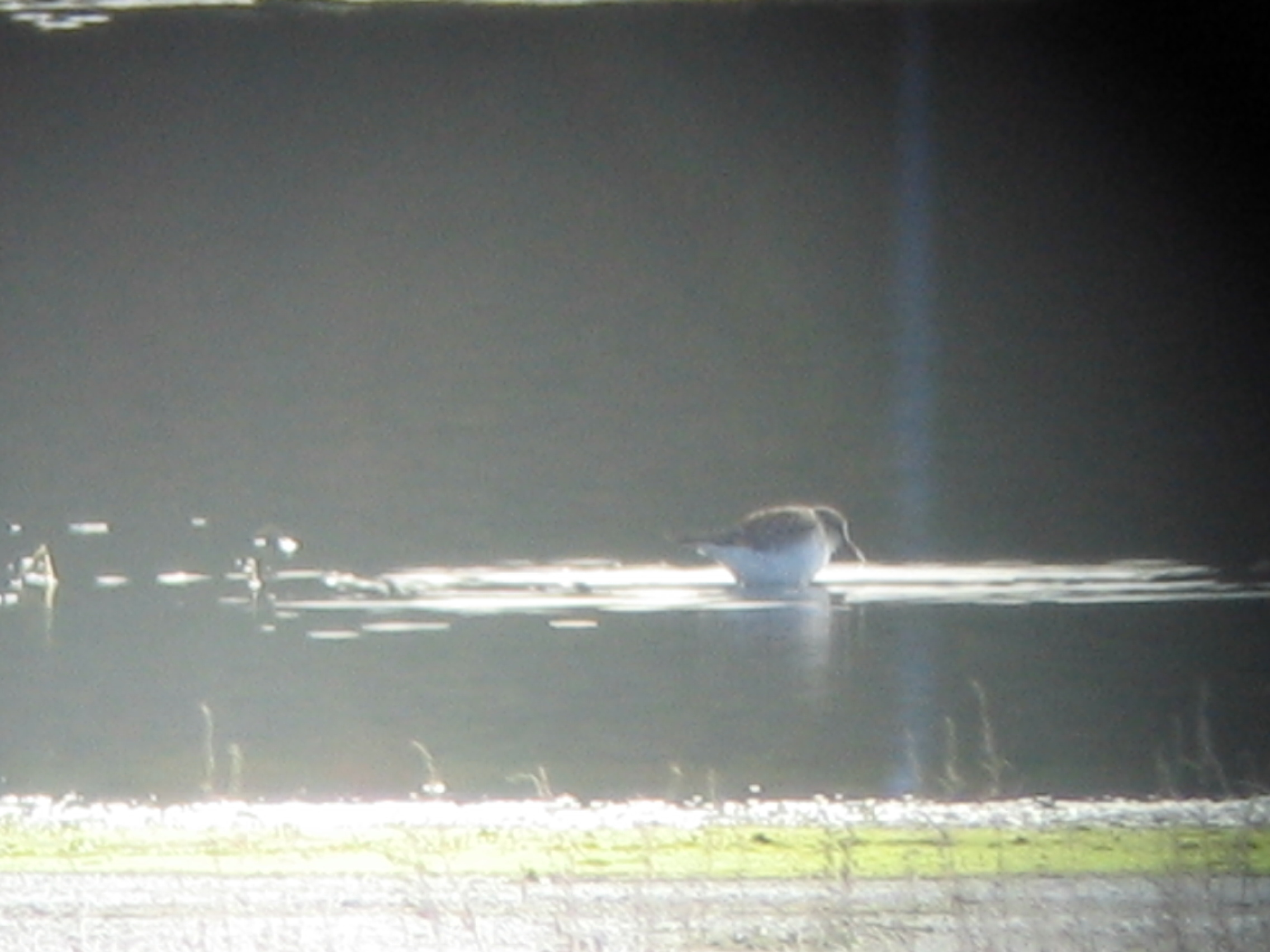
096 Buff-breasted Sandpiper Calidris subruficollis
Another yank, this one twitched at Slimbridge in Gloucestershire, 2006. There were three present, but in fact I was there to twitch an even rarer vagrant, Semi-palmated Sandpiper. I bagged decent views of both species that morning, but was hasty and haphazard (or just plain shite) with my digiscoping – I think it was very windy – and got only terrible record shots. At least the Buff-breasted is sufficiently distinctive with round head and beady eye.
I have cause to be rather pissed off with this species. In December 2012, soon after we arrived in SA one was found at Price Salt Works near Ardrossen on the Yorke Peninsula. It is sufficiently rare that people came from all around the country to twitch it, but having seen these couple at Slimbridge I didn’t bother going (Oo, I’m such a cool world birder… ;-)). Sadly someone managed to get their car stuck on one of the access bunds and had to be towed out; this was just the excuse the salt company needed to close the site off for birding access altogether. As far as I am aware, no birders have been back in there since, except maybe as part of an official survey.

097 Pectoral Sandpiper Calidris melanotos
Appallingly, I until I did some digging into my photographic and OOS records, I had no memory of whether I saw this I the UK or not. It turns out that I did! In 2007, a species that had fewer than 10 records historically showed up twice on Port Meadow – once in August, and a pair of juveniles stayed for a couple of weeks in October. I even have an awful digiscoped photo, but I won’t subject you to that – there’s been altogether enough of that already. Luckily I have seen Pec Sand a few times in SA now. They look a lot like Sharp-tailed, but have a slightly longer, two-toned bill, and a neatly demarcated breast. Each year there’s usually one or two at Tolderol, where this photo was taken.
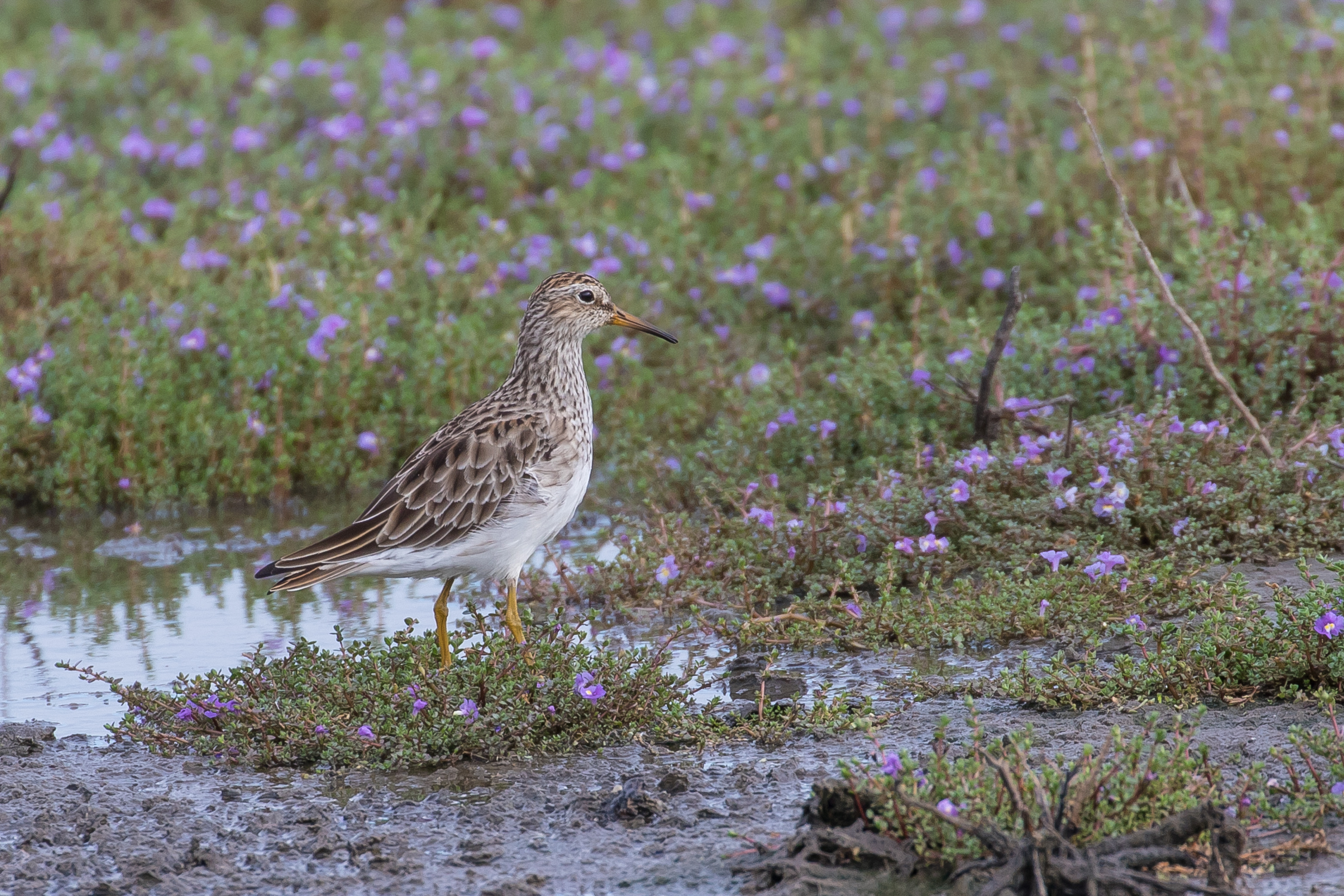
098 Semi-palmated Sandpiper Calidris pusilla
An American peep that I have only seen once. You’ve already heard that tale – 2006, when I twitched both Semi-P and Buff-breasted at Slimbridge. My views were distant, tickable but underwhelming. One of those moments when the list seems to take precedence over the bird. I warned above that it is a poor shot…
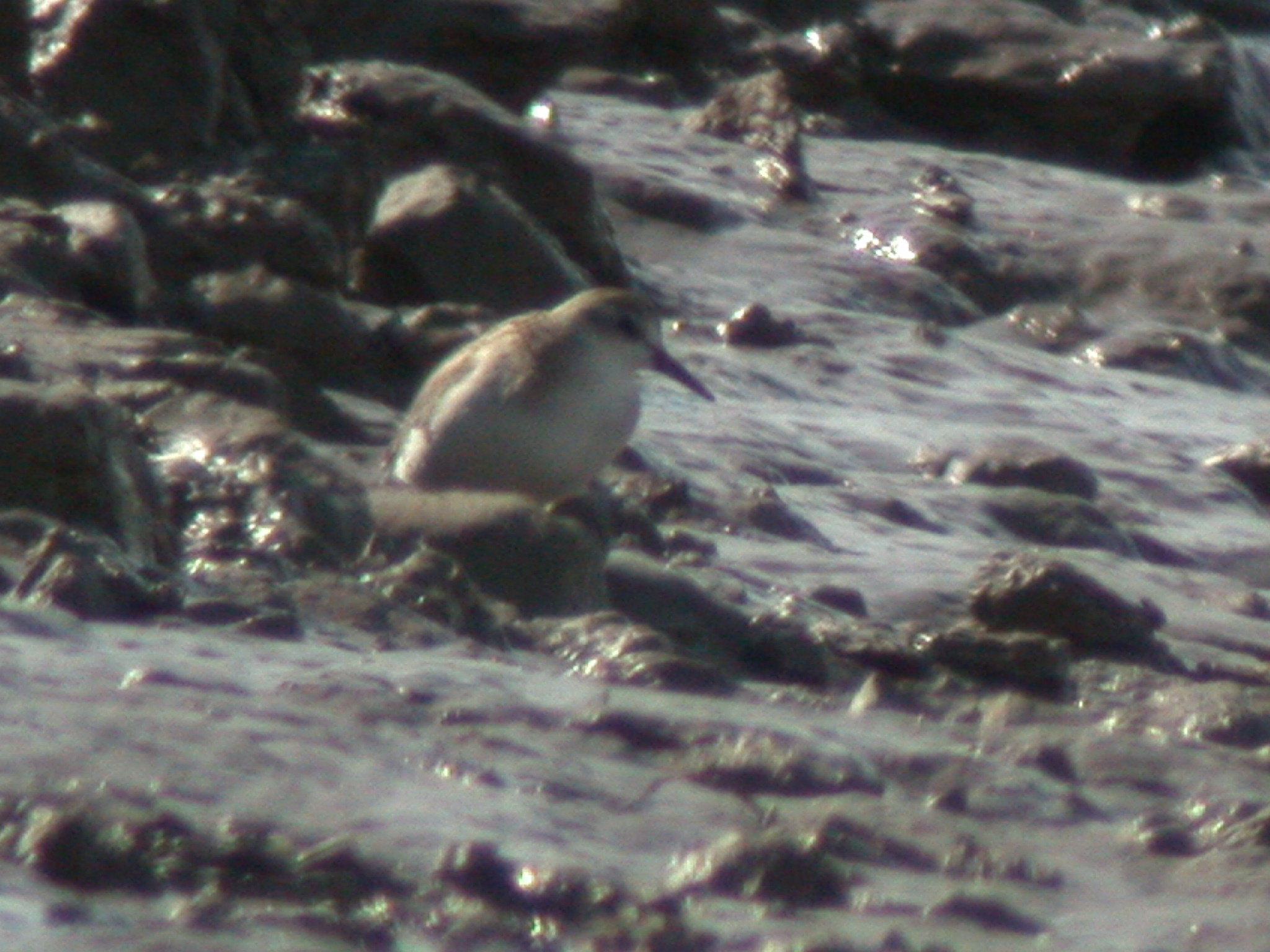
099 Western Sandpiper Calidris mauri
Last, but not Least (you need to look up to 094 for that! #dadjoke) is Western Sandpiper. I remember Tom telling me his dream was to find one of these in Oxfordshire. Not something I aspired to, or even thought possible for me. I saw lots in a few places on my Santa Barbara conference trip (see Snowy Plover in an earlier post). The first site was with Dowitchers on Deveraux Lagoon, but then I had good numbers – along with Avocets, Least Sandpipers, Marbled Godwits, and more Dowitchers – at Red Hill Marina on the Salton Sea.
